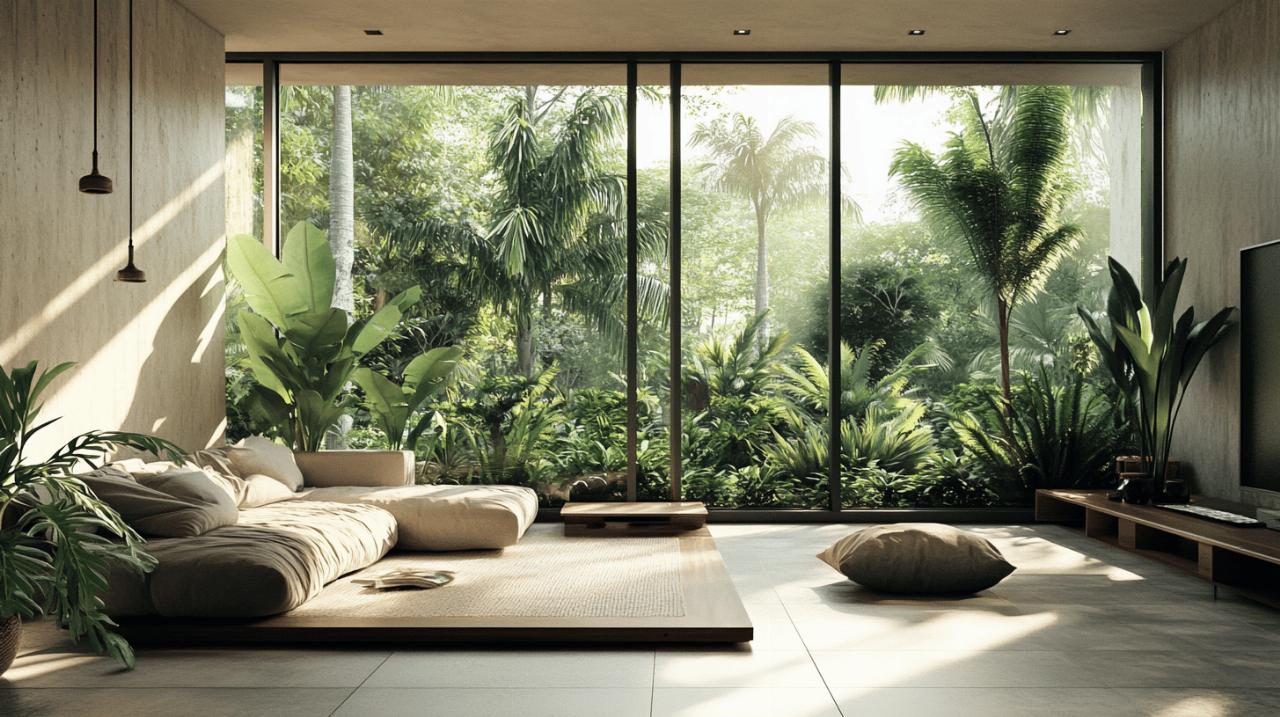As temperatures rise during summer months, many homeowners seek effective ways to maintain comfort without relying on energy-intensive air conditioning. At casajedo.es, we understand the challenges of balancing summer comfort with energy efficiency. This comprehensive guide offers proven home improvement strategies that can significantly reduce indoor temperatures while minimizing cooling costs.
Strategic fan placement and usage
Fans represent one of the most cost-effective cooling solutions available, using significantly less energy than traditional air conditioning systems. While an air conditioner consumes the same amount of energy in just one hour that a refrigerator uses in an entire day, electric fans operate at a fraction of this cost—typically between £0.15 and £0.31 per day in Great Britain and even less in other regions.
Ceiling and floor fan positioning techniques
The positioning of your fans dramatically affects their cooling efficiency. Unlike common practice, placing fans at lower positions proves more effective as they can circulate cooler air that naturally settles near the floor. This strategic placement creates upward air movement, distributing coolness throughout the room rather than simply moving hot air around.
Creating multi-fan systems for maximum cooling
For enhanced temperature regulation, consider implementing a multi-fan cooling system throughout your home. By positioning multiple fans to create intentional air pathways, you can establish continuous airflow that prevents hot spots from forming. This approach creates a cooling network that maximizes the effectiveness of each individual fan while maintaining consistent comfort levels throughout your living spaces.
Window management for temperature control
Proper window management serves as a crucial element in natural home cooling strategies. Thoughtful control of when windows remain open or closed can create significant temperature differences indoors without any additional energy consumption.
Timing window openings for optimal air exchange
The key to effective window management lies in understanding the relationship between indoor and outdoor temperatures. Keep windows closed during peak heat hours when exterior temperatures exceed those inside your home. Conversely, open windows during cooler periods—typically early mornings and evenings—to facilitate natural air exchange. This creates cross-breezes when windows on opposite sides of your home remain open simultaneously, enhancing cooling effects throughout your living spaces.
Installing heat-reflective films and coverings
Window coverings play a vital role in heat management during summer months. Curtains, blinds, and shutters block direct sunlight, preventing solar heat gain. For enhanced protection, consider installing heat-reflective window films that reject infrared radiation while allowing visible light to enter. These specialized films can reduce indoor temperatures by several degrees without sacrificing natural lighting, making them an excellent long-term investment for summer comfort.
Home insulation and air sealing methods
While typically associated with winter warmth, proper insulation and air sealing equally benefit summer cooling efficiency by preventing unwanted heat transfer between indoor and outdoor environments.
Identifying and fixing common heat entry points
Heat infiltrates homes through various pathways including gaps around doors, windows, electrical outlets, and other structural penetrations. Conducting a thorough inspection of your home helps identify these vulnerable areas. Once located, addressing these weak points can substantially reduce heat gain during summer months, resulting in cooler indoor temperatures without additional cooling equipment.
Diy weather-stripping and caulking projects
Simple weather-stripping and caulking projects represent affordable yet effective home improvements for temperature control. These projects require minimal tools and materials but deliver significant benefits by sealing gaps that allow hot air infiltration. Focus on areas around windows, doors, and where different building materials meet to create a more thermally efficient envelope that maintains cooler indoor conditions regardless of exterior heat.
Natural cooling with indoor plants
Indoor plants contribute to home cooling through evapotranspiration—a natural process that releases moisture into the air, creating a cooling effect similar to a small, natural humidifier.
Best plant species for heat reduction
Certain plant varieties excel at cooling indoor environments. Large-leafed tropical plants like peace lilies, rubber plants, and snake plants release significant moisture through their foliage. Additionally, aloe vera and other succulent varieties not only cool the air but also offer medicinal benefits for summer-related skin issues. Incorporating these natural cooling assistants throughout your home creates multiple micro-cooling zones that collectively reduce ambient temperatures.
Strategic plant placement throughout your home
The location of your indoor plants influences their cooling effectiveness. Placing plants near windows—but protected from direct, intense sunlight—allows them to absorb heat that would otherwise radiate into your living spaces. Clustering several plants together amplifies their collective cooling effect, creating plant-based cooling stations in areas where you spend the most time during hot weather. 
Minimizing internal heat generation
Many homeowners overlook internal heat sources that contribute significantly to indoor temperature increases during summer months.
Appliance usage planning and alternatives
Household appliances generate substantial heat during operation. Limiting the use of ovens, dryers, and dishwashers during peak heat hours prevents unnecessary temperature increases. Consider alternative cooking methods such as outdoor grilling, microwave cooking, or preparing cold meals that require no heat generation. When appliance use becomes necessary, operating them during cooler evening hours minimizes their impact on your home’s temperature.
Smart lighting choices to reduce heat
Traditional incandescent bulbs convert a significant portion of energy into heat rather than light. Upgrading to LED lighting dramatically reduces this heat generation while simultaneously lowering energy consumption. This transition represents both an immediate temperature improvement and a long-term energy efficiency enhancement that continues paying dividends throughout all seasons.
Fabric and Material Selections for Summer
The materials surrounding you indoors significantly impact perceived comfort levels during hot weather, particularly regarding sleep quality and general comfort.
Upgrading bedding for nighttime comfort
Summer sleep quality often suffers due to heat retention in traditional bedding materials. Switching to lightweight, natural fiber sheets and blankets made from cotton, linen, or bamboo improves nighttime comfort by enhancing breathability and moisture wicking. These materials allow better air circulation around your body and efficiently release heat rather than trapping it against your skin, promoting restorative sleep despite elevated temperatures.
Light-colored furnishings to reflect heat
Dark colors absorb and retain heat, while lighter hues reflect it. Incorporating light-colored furnishings, especially in rooms receiving direct sunlight, naturally reduces heat absorption. Consider seasonal slipcovers in pale tones for darker furniture or strategically placed light-colored throws and pillows to create cooler sitting and resting areas throughout hot weather periods.
Creating a personal cooling environment
Beyond whole-home cooling strategies, establishing personal cooling zones provides immediate comfort during intense heat events.
Hydration stations and cold compresses
Maintaining proper hydration significantly impacts how your body manages heat. Creating dedicated hydration stations throughout your home with water, cooling beverages, and perhaps a bowl of ice encourages regular fluid intake. Additionally, keeping cold compresses available for application to pulse points—wrists, neck, and temples—provides immediate cooling relief during particularly hot periods without requiring any electrical energy.
Breathable Clothing and Fabric Choices for Indoor Comfort
Your clothing choices dramatically influence personal comfort during hot weather. Opt for loose-fitting garments made from natural fibers like cotton, linen, or hemp that allow air circulation and efficient moisture evaporation. These breathable fabrics work with your body’s natural cooling mechanisms rather than inhibiting them, maintaining comfort even in elevated temperatures without requiring mechanical cooling assistance.



